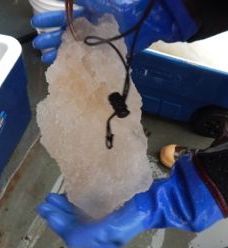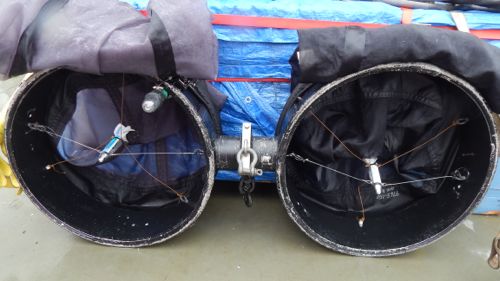Lipid Biomarkers
You are what you eat or better said; you are a reflection of your diet. This statement is true for all organisms. Epibenthic (surface bottom dwellers) organisms can obtain their food from material that falls to the bottom and/or they are predators. By analyzing the lipids (naturally occurring fats) science can determine animal diets. (Lipids are an energy store and cells have lipids in their cell membranes.) For example copepods, unlike humans, cannot make cholesterol; they must consume something that does. Neptunea, a predatory snail, may eat algae and clams or just clams. The lipids in the snail’s tissue can determine what was eaten. Different lipid biomarkers are indicative to specific marine invertebrates

Ice Algae...Is there such a thing?
Yes there is ice algae...wild right? Ice algae are diatoms that once lived in the water column and have adapted to live between the ice and the seawater. Ice contains tiny brine fissures and through these fissures light can penetrate, while they appear in a thick layer on the bottom ice. If you took all the algae in the polar regions, ice algae would make up only 5-8% of the population in the waters below.

Ancient algae...cyanobacteria
Ancestors of cyanobacteria have existed on this planet long before the dinosaurs. These algae make a unique compound; that define that group. Cyanobacteria can live in the water column or in the sediments. If they are located in the sediment samples then they have been in the area for a while. Scientist can tell by the algae's chromosomes (genomic analysis) where their closet relative lives. Science rocks!

Sensitive invertebrates.... Krill
Just as a boat makes a bow wave at the front of the boat (bow) so does a bongo net. More precisely the net creates a difference in pressure. Krill are very sensitive to movement in the water and will move away from any disturbance. This would be a defense mechanism to avoid being eaten by whales. Then how do you catch them? Believe it or not, scientists attach a strobe to the mouth of the bongo to confuse the krill. The light temporarily blinds or stuns them and they can then be captured in the net. The Harvey group (under the direction of Dr Rodger Harvey from Old Dominion University) is studying the krill's diet and life span. Not only do krill feed in the water column, but surprisingly also on the bottom.



Comments